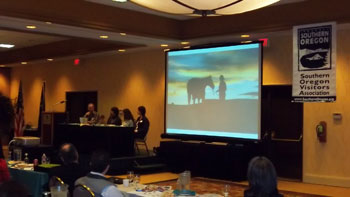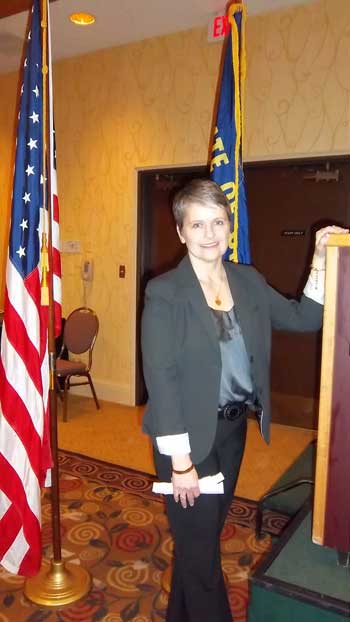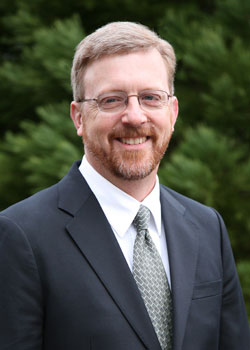Carolyn S. Hill, CEO of Southern Oregon Visitors Association, kicked-off a full day of industry speakers and panelists at 9:00 am at the Red Lion Hotel in Medford, Oregon. Todd Davidson, CEO of Travel Oregon was the first speaker. Davidson, who was named Chair of the US Travel and Tourism Advisory Board spoke about the progress Oregon has made in the tourism industry and the awards the state has received. In 2011, Travel Oregon won three Mercury Awards, in 2010, “Oregon Bounty” was named the Best Tourism Campaign in the country, and the Facebook and social media co-ops increased exposure by 275%.
Since 2001, Oregon’s travel sector jobs (which cannot be outsourced) have risen 12% to 92,000, and it is now a $9 billion industry in the state – its highest level ever. Davidson explained that the United States has suffered a 33% decline in travel market share since 2001. People were still traveling – but just not to the States. The US has not had a national marketing strategy – until now, with President Obama’s focus on tourism. In 2003, the Oregon Travel and Investment Proposal was passed – which enacted a 1% state-wide lodging tax to be used to attract visitors to the state. In that year, there were 19 million overnight trips with 8.5 million of marketable trips. The proponents of the new Proposal promised that an aggressive half a billion in travel dollars would come to the state annually. Since 2004, the goal was met or exceeded with $553 million in revenue annually. In 2009, there were 28 million overnight trips with 13 million marketable leisure trips.
At President Obama’s urging, the US Travel and Tourism Advisory Board is looking into new and creative ways to make the US more accessible to the world. The Chinese are currently required to obtain visas by having in-person interviews at one of four or five locations which are valid for a year. Steps are being taken to make this cumbersome process smoother and easier. Already, Chinese travelers can now extend their visas for an additional year at a local bank. According to the U.S. Department of Commerce’s Office of Travel and Tourism Industries, 802,000 mainland Chinese residents visited the U.S. in 2010, a 53% increase over levels in 2009. These visitors collectively spent more than $5 billion (an average of $6,241 per person), a 39% increase over the previous year. 100,00 of these visited Oregon, which equates to $6 million in Oregon revenue.
Davidson spoke about the increase in employment in the leisure and hospitality industry – during 2010-2011, 8,000 jobs were added in the US – making it the largest of any other US sector.
He also noted that Oregon visitors (27.5 million overnight visits in 2011) not only spend needed dollars but also bring in businesses, refer friends and family, many of whom return again and again. Surveys show that 43% of visitors are more likely to buy Oregon products after their trip here (such as artisan foods, wine, Oregon-made items), and 42% introduced these items to others at home, who in turn desire to travel to Oregon, as well.
Next up was Teresa O’Neill, Vice President of Global Sales with Travel Oregon. She focused her talk (and panel) on the growing Chinese visitor growth, which increased 39% in 2011. Also on the panel were Greg Eckhardt, Asia Sales Manager for Travel Oregon and Scott L. Hartcorn, Global Director Tour & Travel for Shilo Inns Suites Hotels. Eckhardt mentioned that Chinese visitors are especially interested in national parks, shopping and authentic experiences (which Southern Oregon has in abundance!). Hartcorn explained the importance of US businesses adapting to other cultural travel needs and habits and making these visitors feel welcome.
 Some new technology tips were presented next by Kent Lewis of Anvil Media of Portland. Lewis focused on the importance of making your presence known on mobile devices. More people are buying smart phones than computers now, and there are 4 billion people texting in the US. Half of internet searches are now done on a mobile device – 77% of Americans use a search engine (like Google or Yahoo) and 65% use Social Media (like Facebook and Twitter). He mentioned that key, peak times for mobile use are after work hours and on weekends, with 31% of the searches being travel related. YouTube is the second largest search engine, so utilizing short, 30-60 second videos is crucial, due to shorter attention spans of the online user. The number of people ordering products with their mobile devices is also increasing each year.
Some new technology tips were presented next by Kent Lewis of Anvil Media of Portland. Lewis focused on the importance of making your presence known on mobile devices. More people are buying smart phones than computers now, and there are 4 billion people texting in the US. Half of internet searches are now done on a mobile device – 77% of Americans use a search engine (like Google or Yahoo) and 65% use Social Media (like Facebook and Twitter). He mentioned that key, peak times for mobile use are after work hours and on weekends, with 31% of the searches being travel related. YouTube is the second largest search engine, so utilizing short, 30-60 second videos is crucial, due to shorter attention spans of the online user. The number of people ordering products with their mobile devices is also increasing each year.
Caroline Hill spoke at the lunch break about technology and the importance of keeping up with change and new ideas (she used the example of Kodak as a company who didn’t). Travel Oregon just unveiled their new website on March 5, 2012, which has new look, a member-driven database, and enhanced user and member capabilities.
After the break, David Grimes, a Park Ranger for Crater Lake gave some fun facts about our local important attraction: it’s 1,943 feet deep – the deepest lake in the U.S., is considered the cleanest and clearest lake in the world and gets average snowfall of 44 feet (56 feet in 2011). Grimes expressed his concern that travel promoters need to be aware that weather conditions at Crater Lake are not always like the postcard images – the fact that the weather and conditions can be so different every day were driven home by his great slide show. He mentioned that visitors may get frustrated if the lake is hidden by a shroud of fog, or the road may be closed, or they cannot camp, etc. It is critical to make sure that travelers understand this flux and be prepared to go with the flow, and see the beauty which is there, even if it is different from their expectations! He used an analogy of a traveler saving for a trip to see the Mona Lisa at the Louvre and then seeing the iconic image not as a beautiful woman but as a bald man or scary-looking, veiled lady. He was very creative with his Mona Lisa pictures, and most certainly got his point across that venturing to Crater Lake required an open mind!
The afternoon continued with some stats from Brittany Baldwin from STR Global, a hotel industry firm that gathers very extensive data about hotel rates, occupancy and more. Most significant was her report that in 2011 in the U.S., 1.6 billion rooms were sold, the most rooms ever.
A panel speaking about Sustainable Tourism ended the day, with Kristin Dahl of Travel Oregon opening the discussion and explaining the definition of sustainable tourism. According to Dahl, 2/3 of travelers want an authentic experience that leaves them with a positive impact…and they are willing to pay extra to get it. Keith Barnhardt, Owner of Willow Springs Guest Ranch (north of Lakeside) spoke of the ways he was sustainable, from solar energy to watershed and cattle raising. Barbara Steele, Owner of Cowhorn Vineyard and Garden in the Applegate Valley spoke about the importance of being certified biodynamic and organic. Last up was Danielle Amartico, Owner of Standing Stone Brewery in Ashland, who detailed their great efforts to be sustainable and low-impact. They initiated a bike program and now lease 200 plus acres from the city of Ashland to raise their own beef, chicken and eggs. The brewery also composts and handles trash in such an effective way that they have only one little trash can weekly at the restaurant!
Overall, kudos should go out to Carolyn Hill with SOVA and Travel Oregon for an informative and important symposium. Jacksonville benefits from their efforts, and it’s reassuring to know that we are certainly not alone in bringing visitors (commerce) to our little town!


